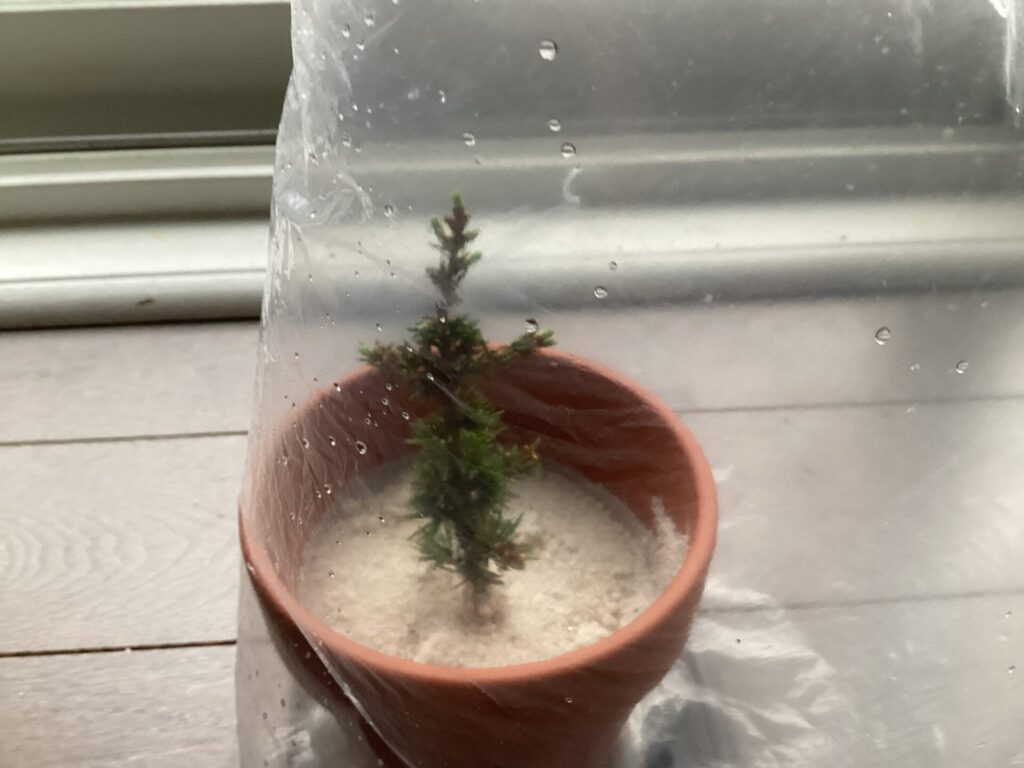
Hello, do you have any tips on propagating Cedrus Brevifolia Kenwith in sand?
Thank you for contacting the Toronto Master Gardeners.
Cedrus Brevifolia, commonly called Cyprus Cedars, are members of the Pinaceae family and grow to be long lived tall trees. These are true cedars and originate in the Eastern Mediterranean Sea region, most commonly in and around Cyprus and Lebanon. They are a softwood species prized for their aromatic wood. They are hardy to Canadian Hardiness Zone 6 (-23 to -18 degrees C).
With regards to propagation, this is done mostly through seed or semi-hardwood cuttings. From the picture you’ve attached, it looks like you have the latter. Below, you will find steps on the propagation process and tips for successfully getting your cutting to root.
- The ideal cutting should have a hard base with a soft tip.
- Cuttings taken in late summer to mid-autumn are best.
- Potting up of the cutting should ideally happen within 12 hours of the piece being taken from an older tree.
- When ready to pot up, using a sharp, sterile blade, cut below a node making the cutting 4-6 inches in length.
- Remove any unwanted leaf/needle growth so that there is a short clean stem ready to be planted.
- Dip the cut edge/bottom of the cutting into fresh hormone rooting powder making sure to fully cover/coat any cut edge. Tap to remove excess.
- A planting medium of 50% sharp sand and 50% potting/soilless mix is ideal.
- Using a pot with drainage holes, fill with medium.
- Make a hole in the medium with your finger and gently insert the cutting, carefully firming down the medium to secure the plant.
- Water gently and allow to drain well.
- Cover with a transparent plastic bag and secure it around the pot.
- Place in a warm, light location but not in direct sunlight.
- If you have a heating propagator, place this underneath the pot in order to speed up root development.
- As the days go by, monitor the plastic bag for excess moisture and drain off but make sure the medium is kept damp. Also, monitor for any mold or rot as these are signs that your mini greenhouse is way to wet.
- Once root system has developed the plastic bag can be removed. If you wish to move the little tree outside for the summer, remember to harden it off first.
Hope you find this information helpful. Here’s wishing you success with this project.

